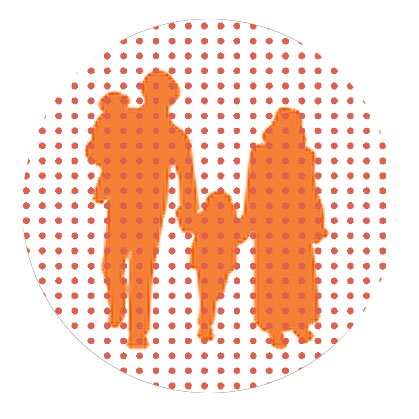Quiet Types

Being very quiet doesn’t have to be a problem

“ATPTA Sari’s teacher told me I should get her therapy because she’s so quiet in class. ‘Sari doesn’t participate.’ ‘Sari doesn’t raise her hand.’ ‘Sari doesn’t want to have a major role in the play.’ ‘Sari avoids group activities, she just has a couple of friends she likes to spend time with.’ I’m also quiet. So’s my husband. Is there something wrong with that?”
Actually, a good percentage of the population is “quiet.” We may work with quiet people, daven with them, or live across the road from them. We might think they’re snobs who don’t like us. Or we might think they’re strange or boring. Because they may say little, we really have no idea what they think about us. We decide what they’re all about. Often, of course, our assumptions are way off.
We have less trouble with the extroverts and happy chatterboxes among us. They’re more likely to reveal their inner thoughts, leaving less up to our imagination. They tell us who they are by what they say and do. At school, they call out in class or eagerly raise their hands. They jump with joy when good news is announced. They shout down the hall to get their friend’s attention.
The quiet ones silently observe. They speak when they must and when they’re with loved ones. Social interaction has little or no appeal to many of the quiet types; they’re often happiest when on their own or with family.
Is it a Problem?
People may be quiet for a variety of reasons. Some may have social anxiety. This mental health disorder causes feelings of panic (shortness of breath, palpitations, sweating, dizziness, etc.) and intense distress when social pressure is applied. The paralyzing anxiety inherent in the condition usually pulls sufferers into therapy for treatment and relief. Parents and teachers are ill-equipped to help kids with true mental health disorders, and their natural (innocent) tendency to push the child into overwhelming social activity, such as classroom participation, can actually worsen symptoms and distress.
Fortunately, most quiet types don’t suffer from social anxiety. They don’t experience symptoms of panic when called upon to answer a question, eat with others, or participate in group activities. (By the way, public speaking phobia — e.g., fear of standing in front of a class to give a presentation — isn’t the same as social anxiety) Non-phobic quiet people may simply not want to speak up. Other times it can just be because they don’t enjoy participating in group discussions.
Sometimes it is because they’re introverts — people who find social interaction draining and sometimes tedious. Whatever the particular reason, the non-phobic quiet people are quiet by choice. It’s their “personality,” their style, their preferred way of being. It isn’t a disorder.
A third group of quiet people may be neither phobic nor uninterested — they may just be “shy.” Shy people may be reluctant to speak to those they don’t know well or to speak in public situations that will require becoming the focus of attention for even a short time. Shyness, unlike social anxiety, doesn’t produce feelings of panic. Rather, it is an uncomfortable, mildly insecure and/or self-doubting condition. The shy person, fearing some level of judgment or rejection, may avoid or dislike social participation. However, there are many shy people who enjoy social activity once they warm up a little or find their way in.
While shyness can cause initial awkwardness and be experienced as unpleasant, it is not considered to be a mental health disorder that requires treatment. As is the case for those in the uninterested group, people in the shy category may find social participation somewhat stressful and irritating. However, unlike the uninterested folk, shy people may actually seek out tips for achieving a more comfortable feeling in both crowds and personal interactions with others.
Classroom teachers can help the quiet kids in the room by allowing them to be themselves. Removing pressure to participate can actually help them relax enough to participate a bit! Gentle praise for participation can also help. Only when a child is in obvious distress (clearly panicking) should a teacher consider the possibility of an anxiety disorder and raise appropriate concerns to the parents.
(Originally featured in Family First, Issue 874)
Oops! We could not locate your form.


